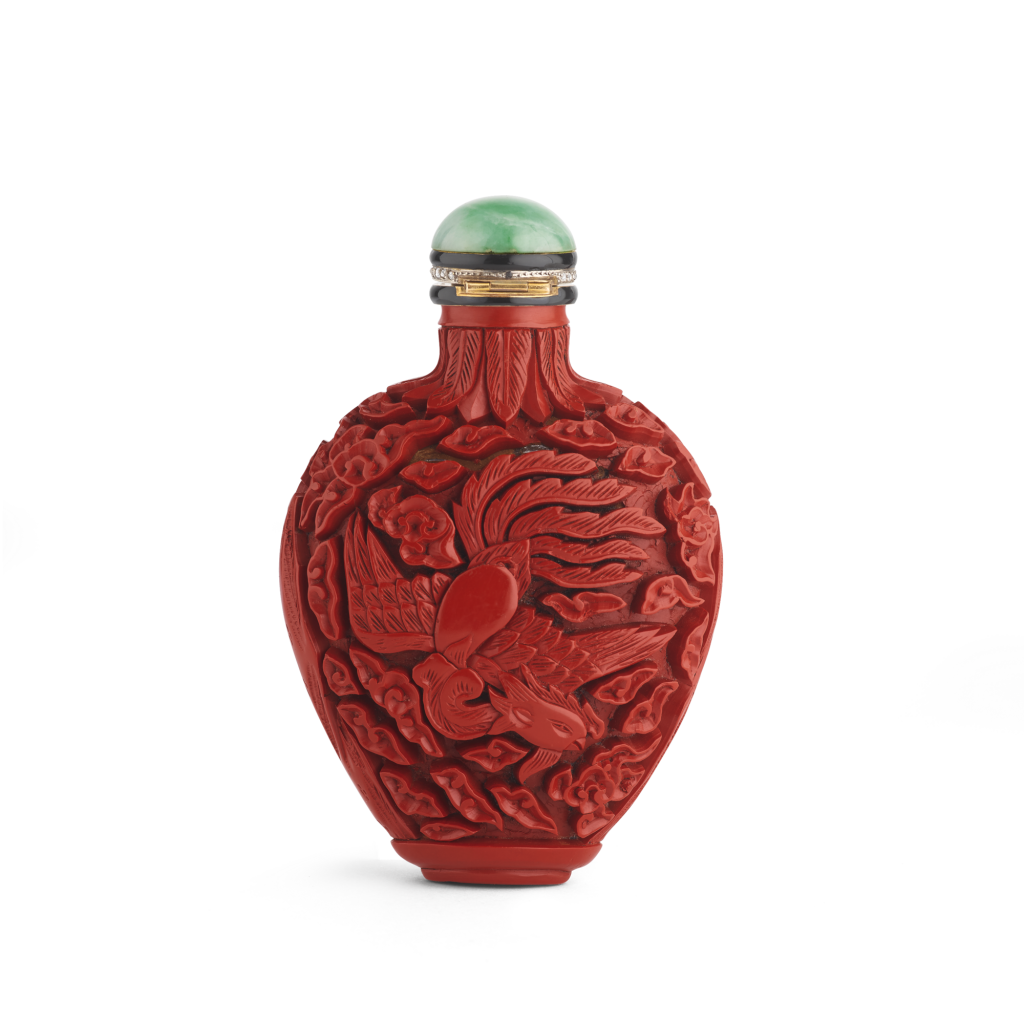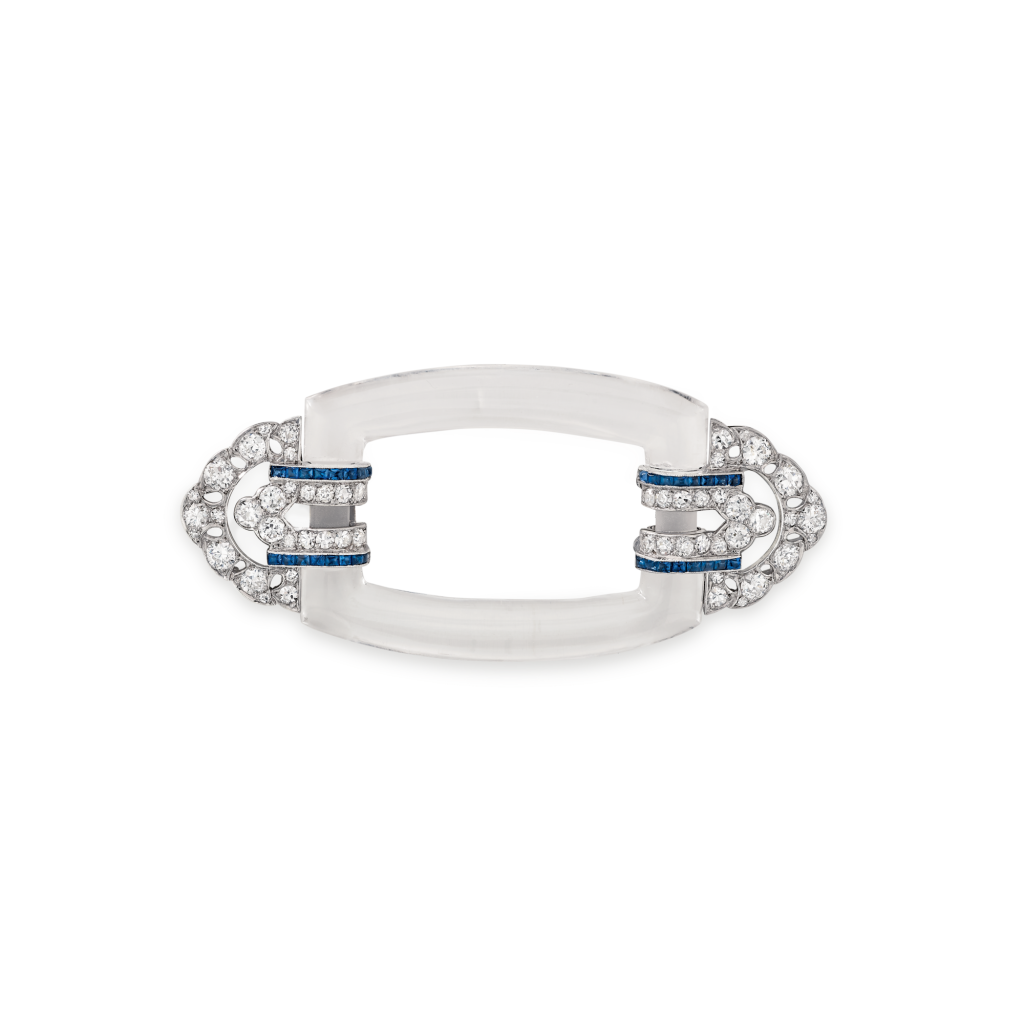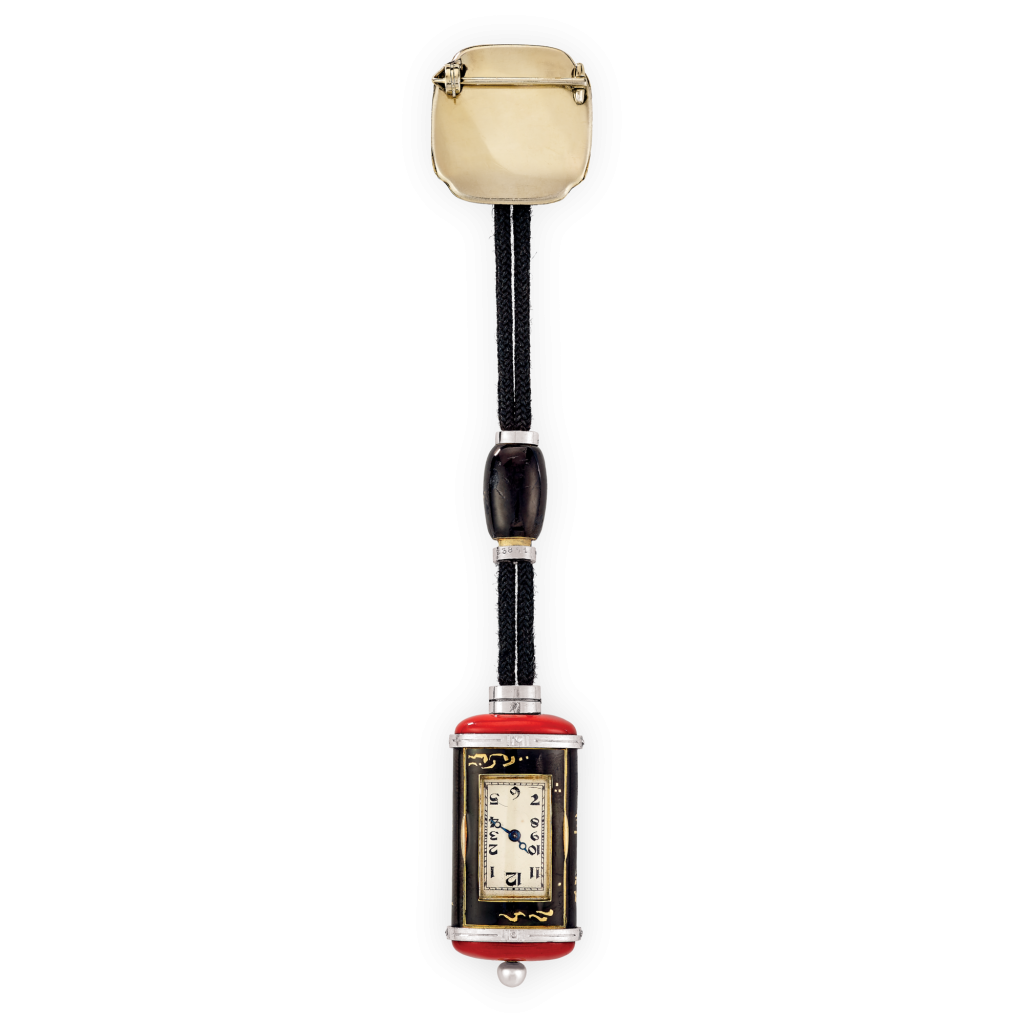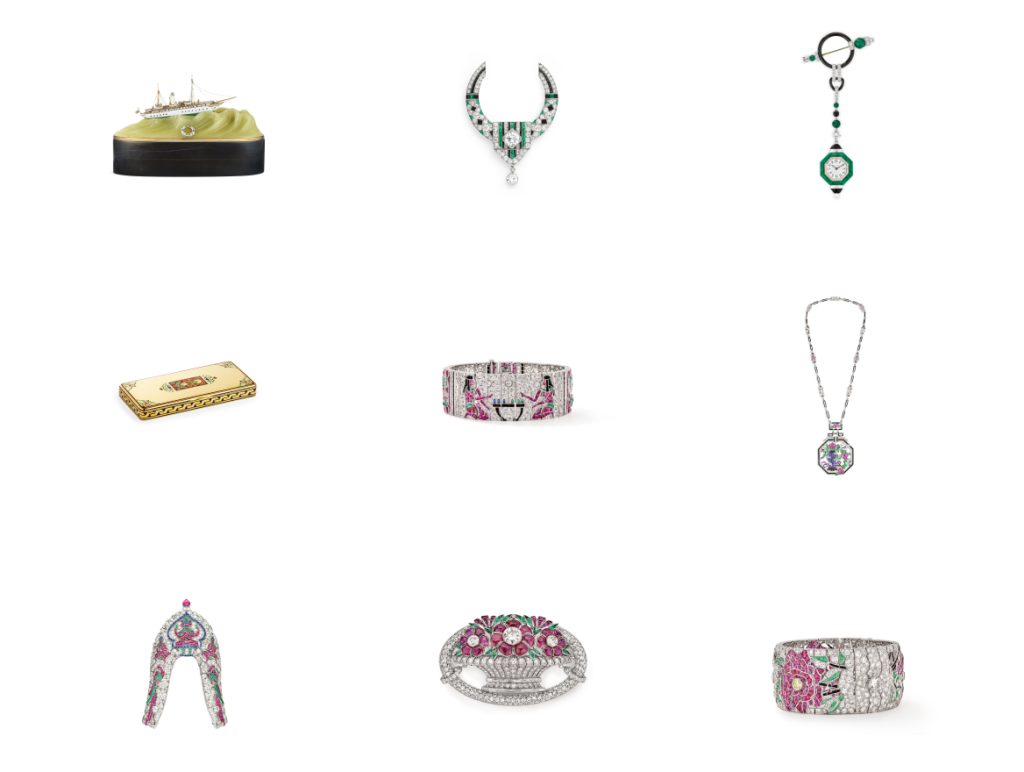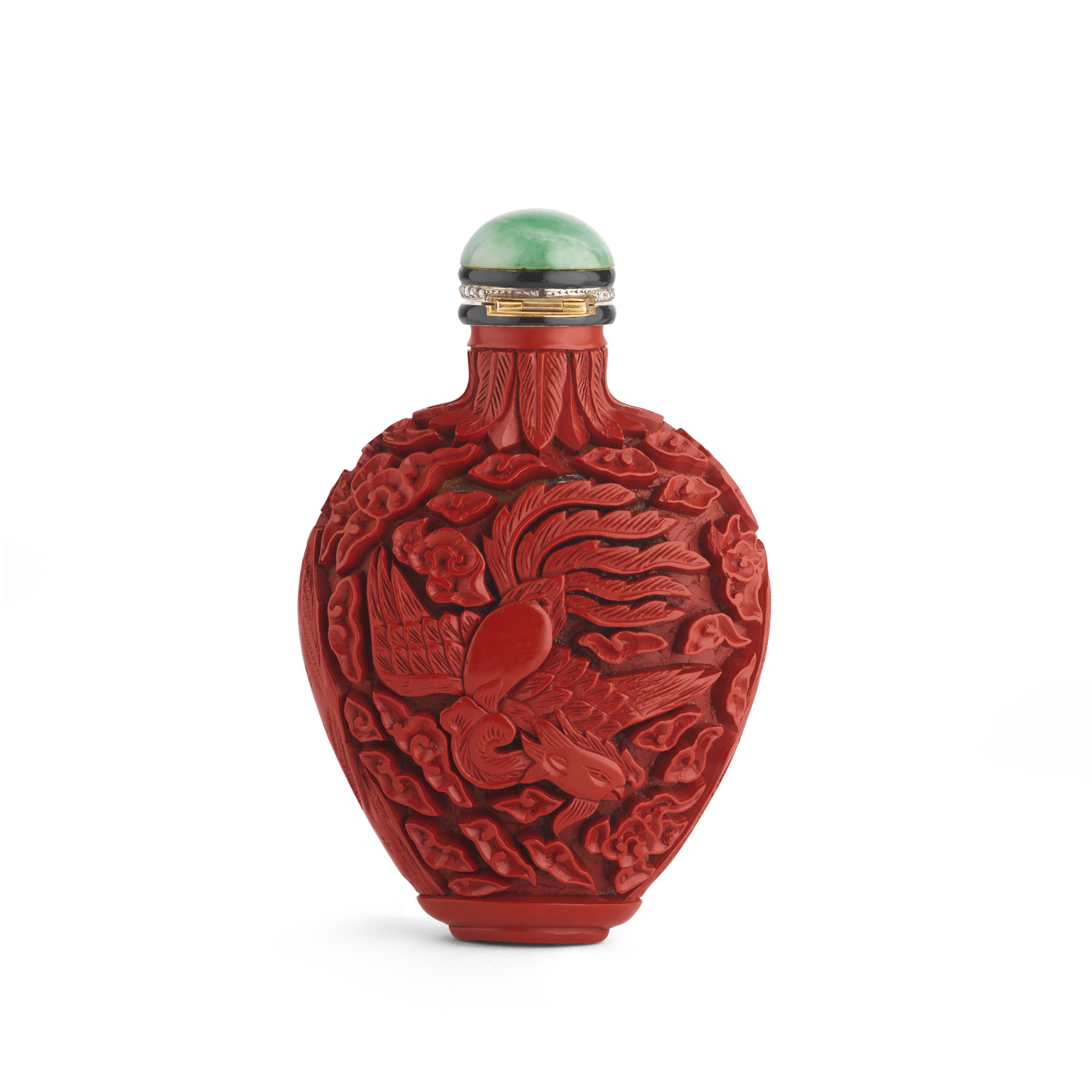
Perfume bottle

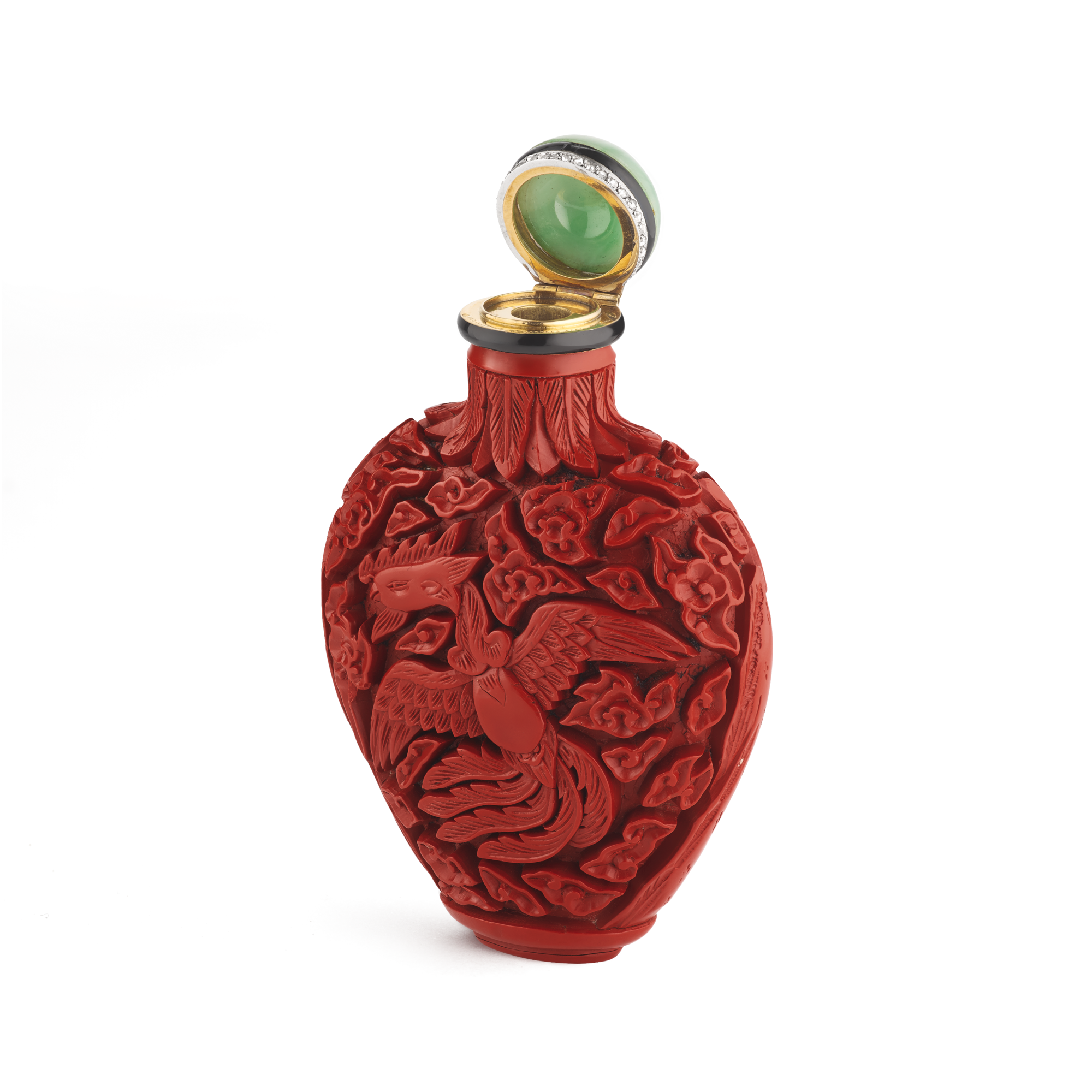
Creation details
- Creation year 1924
- Stone Diamond
- Stone Jade
- Material Gold
- Material Platinum
- Usage Other
- Dimensions 80 × 50 mm
This perfume bottle, designed in 1924, repurposes a Chinese “Peking lacquer” carved red snuff bottle. Both sides depict a phoenix against a background of stylized clouds: on one side, the bird is taking flight while on the other, it dives towards the ground.
A pattern of overlapping feathers decorates the neck of the bottle. The jeweler’s intervention here consisted in the addition of a jade cabochon on the stopper, together with a row of rose-cut diamonds on yellow gold, underlined by two rings of black enamel, one on the bottle neck and the other on the stopper. This is not the only bottle of this kind made by Van Cleef & Arpels. That same year, two other similar objects were made by the Maison from carved amber Chinese snuff bottles.
A fascination with Asia
This perfume bottle is evidence of a manifest interest in the arts of China and illustrates the presence of Asian art in Paris in the 1920s. In the wake of the nineteenth-century Orientalist style, the early twentieth century saw a growth in the sale of collections of Chinese porcelain and objets d’art.1Among these sales, let us cite that “of objects from China” from the Schilling Collection [Anonymous, “Vente à Paris,” La Renaissance de l’art français et des industries de luxe, (January 1925): 379]; the sale of M. Gentien’s collection of Oriental objets d’art, including Chinese porcelain and hardstones [Anonymous, “Ventes prochaines,” La Renaissance de l’art français et des industries de luxe (January 1923): 632]; and “The Seventh Worch Sale: Objects from China” (Anonymous, La Renaissance de l’art français et des industries de luxe (January 1923): 115].
Une vague de sinomanie à Paris
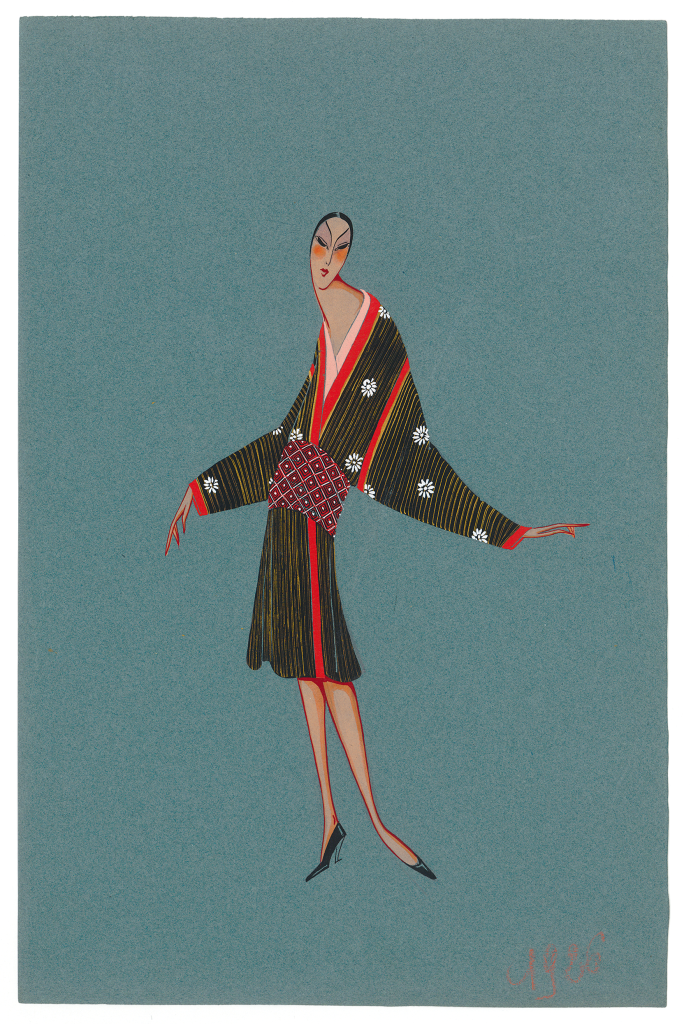
In 1923, for example, the Bal de l’Opéra in Paris illustrated the mania for “all things Chinese,” with “mandarin gowns […], kingfisher feathers […] [and] jades with soft, milky white reflections.”2Anonymous, “La Chine à Paris,” La Renaissance de l’art français et des industries de luxe (January 1923): 435. Far Eastern influences on fashion were seen in the work of designers such as Paul Poiret and Jeanne Lanvin, much in vogue during the first two decades of the twentieth century. The same applied for the jewelers who, in tandem with couturiers, dreamed up Chinese-inspired jewelry and objects to adorn the female figure.
To go deeper
